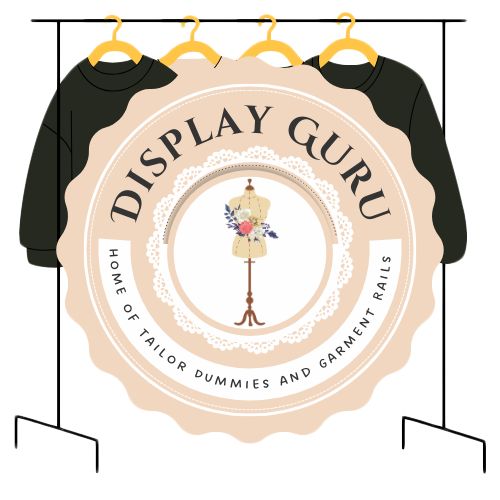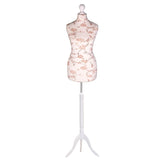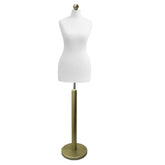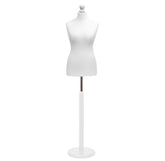Choosing Your Best Craft Light With Magnifying Glass
Ever find yourself squinting at fine details, losing the joy of your craft to frustrating shadows and eye strain? A craft light with a magnifying glass is the one piece of kit that can completely change the game. It’s a brilliant combination of focused, powerful LED light and a crystal-clear lens that makes intricate work a pleasure, not a pain.
Why Your Crafting Deserves Better Light and Magnification

Think of it as having a jeweller's eye for detail and a photographer's studio lighting, all wrapped up in one convenient tool for your hobby space. Whether you're threading the finest of needles or painting a tiny tabletop miniature, this lamp provides the sharp clarity and bright, even light you need to do your best work.
So many of us know the feeling – leaning in close, trying to catch the light just right, only to end up with a headache and a few misplaced stitches. A dedicated magnifying lamp puts an end to all that. The light is designed to flood your project with a shadow-free glow, right where you need it, while the lens brings every tiny detail into sharp focus. No more guesswork.
The Real Impact on Comfort and Precision
This isn't just about making things look bigger and brighter; it's about fundamentally improving how you work and feel. The difference is something you’ll notice straight away.
- Less Eye Strain: The perfect blend of light and magnification means your eyes don't have to work nearly as hard. You can say goodbye to fatigue and discomfort, even during those longer crafting sessions.
- Pinpoint Accuracy: When you can see every single thread and brushstroke with absolute clarity, your precision goes through the roof. This means neater stitches, cleaner paint lines, and a higher quality finish on everything you create.
- More Enjoyment: Let's be honest, it's hard to relax and enjoy your hobby when you're struggling to see. Working comfortably makes the whole process more fulfilling and fun.
Improving your physical comfort is key to enjoying your craft, which is why after sorting your lighting, you might also be interested in finding the best ergonomic crochet hooks.
A good craft light with a magnifier isn't just another tool. It's more like a superpower for your eyes, unlocking a level of detail and comfort that makes it an absolute must-have for any serious crafter.
Ultimately, adding one of these to your workspace is an investment in your craft and your own well-being, just as important as creating the perfect sewing room setup.
What to Look For in a Magnifying Craft Light
Choosing the right magnifying craft light can feel a bit technical at first glance. You'll see terms like diopter, lumens, and Kelvin thrown around, but don't let the jargon put you off. Getting to grips with these features is the key to finding a tool that genuinely makes your crafting easier and more enjoyable.
Let’s break down what really matters, starting with the heart of the lamp: the magnifying lens itself.
Understanding Magnification
The power of the lens is measured in dioptres. It's a technical term that simply describes how curved the glass is. Think of it like a prescription for your crafts – a higher dioptre number means a stronger magnification. This is usually translated into a more familiar 'X' rating (like 2x or 5x magnification) on the packaging, which makes it much easier to understand at a glance.
The image below gives you a great visual of how these specifications come together in a typical craft lamp.

You can see how the lens power, light coverage, and physical reach all work in harmony to bring your project into sharp focus.
The Quality of Light
Once you've got the magnification sorted, the light itself is the next critical element. You'll want to pay attention to two main measurements: lumens and colour temperature.
- Lumens (lm): This is all about brightness. A higher lumen count means a brighter light, which is exactly what you need to banish shadows and see every tiny detail clearly. The best lamps will offer adjustable brightness settings, so you can tailor the light to your project.
- Colour Temperature (K): Measured in Kelvin (K), this tells you about the colour of the light. It ranges from a warm, cosy yellow (around 2700K) to a cool, clinical blue-white (over 5000K). For most craftwork, a daylight temperature between 4000K and 5000K is the sweet spot. It mimics natural daylight, ensuring the colours you see are true and accurate.
When you think about the UK's craft sector, which supports over 182,000 jobs, you realise how vital this kind of precision is. Whether it's needlework or model painting, seeing true colours is non-negotiable for producing high-quality work.
Design and Practicality
The final piece of the puzzle is the lamp’s physical design. A great magnifying lamp should feel like a natural extension of your workspace, not a clumsy obstacle.
Look for a flexible gooseneck or a multi-jointed swing arm. This allows you to position the light and lens perfectly over your work without it ever getting in the way. The arm's reach is also a big factor, especially if you have a large workbench or tackle bigger projects.
The best craft light is one you forget is even there. Its arm should move smoothly, hold its position perfectly, and bring clarity to your work without requiring constant readjustment.
Finally, think about the base. A clamp-on base is a brilliant space-saver, gripping tightly onto the edge of your desk. If you need to move the lamp around your table, a weighted desktop base is more portable. For total freedom, a floor-standing model can be positioned next to an easel, armchair, or any larger workstation.
The right choice really comes down to your personal setup and workflow. For sewers and quilters, we have some more tailored advice in our guide to the best lamps for sewing.
Magnifying Craft Light Feature Comparison
To help you decide, here's a quick comparison of the key features and what they mean for different types of crafting.
| Feature | What to Look For | Best For |
|---|---|---|
| Magnification | A dioptre of 3-5 (around 1.75x-2.25x magnification) is great for general tasks. Go for 8+ for very fine detail. | General crafting, reading patterns, needlework. Higher magnification is ideal for model painting or jewellery making. |
| Lumens | Look for at least 500-1000 lumens with adjustable brightness settings. | Any project where eliminating shadows and seeing texture is crucial, like quilting or embroidery. |
| Colour Temperature | Aim for 4000K-5000K, often described as "daylight" or "cool white." | Painting, colour-matching threads, and any work where seeing true colours is essential. |
| Arm Type | A flexible gooseneck offers easy positioning; a swing arm provides a longer reach. | Goosenecks are perfect for small desks. Swing arms are better for large workbenches or multi-use spaces. |
| Base Type | Clamp-on saves space, a weighted base is portable, and a floor stand offers maximum flexibility. | Clamps are ideal for dedicated craft tables. Floor stands work well beside sewing machines or armchairs. |
Choosing a lamp with these features in mind will ensure you get a tool that not only illuminates your work but actively improves your ability to create.
Matching the Right Lens Strength to Your Hobby

Choosing the wrong lens for your craft light with a magnifying glass can be just as frustrating as having no magnification at all. If it's too weak, you'll still find yourself squinting. But if it's too strong, you might feel a bit disoriented or find the working distance too short. The trick is to find that sweet spot where your hobby becomes easier, not more complicated.
The power of a magnifying lens is measured in dioptres. You can think of it just like a prescription for reading glasses; it's a specific measurement of the lens's curvature. This is often translated into a more familiar 'X' value (like 2.25x), which simply tells you how much bigger an object will look. The higher the dioptre, the more powerful the magnification.
Finding Your Magnification Sweet Spot
Different crafts call for different levels of detail. A good rule of thumb is to start with the lowest magnification that gets the job done comfortably. Over-magnifying can really narrow your field of view and might lead to eye fatigue, especially during those longer crafting sessions.
Here are a couple of common scenarios to think about:
- For general tasks like knitting or crochet, where you just need to see your stitches clearly, a lower-power lens is perfect. A 3-dioptre (1.75x) lens gives you a wide viewing area and a comfortable distance to work from.
- For precision work like cross-stitch or model painting, where every tiny detail matters, you'll need something stronger. An 8-dioptre (3.0x) lens will bring those minute details into sharp, clear focus.
The goal isn't just to make things bigger; it's to achieve clarity without sacrificing comfort. Your ideal lens should feel like a natural extension of your vision, taking away the strain so you can lose yourself in your craft.
Matching Dioptre to Your Craft
The quality of these lenses really speaks to the skill within the glass manufacturing world. In the UK, the Glass and Glass Product Manufacturing industry, which is responsible for crafting these high-quality lenses, was valued at around £4.8 billion in 2025. Even with industry challenges, the precision that goes into making these tools is exceptional. You can find more insights into the UK's glass manufacturing industry from IBISWorld.
To make your decision a bit easier, here’s a quick guide to help you match a dioptre range to what you love doing.
| Dioptre Range | Magnification (Approx.) | Best For Hobbies Like... |
|---|---|---|
| 3-Dioptre | 1.75x | General reading, knitting, large-scale needlepoint, and puzzles. |
| 5-Dioptre | 2.25x | Sewing, embroidery, fly-tying, and electronics assembly. |
| 8-Dioptre | 3.0x | Fine model painting, jewellery making, watch repair, and micro-soldering. |
By picking the right lens strength from the get-go, you'll make sure your new tool is a genuinely helpful partner in your creative work. For more tips on setting up your creative space, feel free to check out our guide on tools for sewing and crafting.
Real-World Uses for Needlework and Model Making
It’s one thing to talk about features and specs, but where a craft light with a magnifying glass really proves its worth is in the real world. These aren’t just gadgets; they are problem-solvers that turn frustrating moments into creative triumphs. Let’s look at how they make a massive difference in a couple of popular, detail-heavy hobbies.
If you’ve ever tried cross-stitching on dark fabric—think navy or black Aida cloth—you know the struggle is real. The tiny holes in the fabric weave seem to vanish completely, making it a nightmare to count threads and place your stitches accurately. It's a recipe for eye strain, mistakes, and hours spent unpicking your work.
But get a magnifying craft light involved, and the game changes entirely. The powerful, directed beam lights up the dark fabric, and the lens brings the weave into sharp focus. Suddenly, every single hole is perfectly visible. You can guide your needle with confidence, stitch after stitch, without the guesswork.
Mastering Miniature Details
Model makers wrestle with a similar set of problems, just on a much smaller scale. Imagine trying to apply a tiny water-slide decal to a miniature tank or paint a super-fine highlight on a gaming figurine. It takes incredible precision and a steady hand.
A model builder with a magnifying lamp can position the lens right over their work, leaving both hands free to handle the delicate parts. This is where the magic happens.
- Applying Decals: The magnified view lets you see exactly where the decal is settling, so you can smooth it down perfectly without any trapped air bubbles.
- Painting Fine Lines: You can literally see the individual bristles of your brush, giving you the control to paint razor-sharp edge highlights and tiny details you couldn’t manage before.
- Inspecting Work: By angling the light, you can check your finish for any tiny flaws in the paint or get rid of the glare from a fresh coat of varnish.
The right light transforms the entire experience from a test of your eyesight into a pure display of skill. It empowers you to execute the fine details you envision with confidence and precision.
Whether it’s for complex needlework, detailed model making, or the precision work done by many artists and inventors, good light and magnification are simply indispensable. These tools close the gap between your creative vision and what your hands can actually do.
For more inspiration on setting up the perfect creative zone, check out our guide to fantastic sewing room ideas.
Your Step-By-Step Guide to Selecting a Magnifying Lamp

Ready to find the perfect craft light with a magnifying glass? Let's walk through the key things to consider, so you can pick a lamp that feels like it was made just for you. Breaking the decision down into a few simple steps makes the whole process much less daunting.
The first, and arguably most important, thing to think about is your workspace. Where you do your crafting has a massive impact on the type of lamp that will work best. Do you have a big, dedicated workbench? Or are you squeezing your hobby into a corner of the living room?
Your answer will immediately guide you to the right mounting style. If you’re short on space, a solid desk-clamp model is a brilliant solution, as it fixes to the edge of your table without eating up valuable surface area. On the other hand, if you like to move from your sewing table to a comfy armchair, a floor-standing lamp gives you that much-needed flexibility.
Assess Your Workspace and Needs
Before you even begin looking at models, take a good, hard look at your current setup. A few minutes of planning here will save you a lot of hassle later and stop you from buying a lamp that just doesn't fit your space or your style.
Here are a few questions to ask yourself:
- How far does it need to reach? Measure the distance from the edge of your desk to the centre of your work area. A lamp with a short, stubby arm will only cause frustration on a large table.
- What’s your surface situation? Is there plenty of room for a weighted base, or is a clamp-on design your only realistic option? If you realise you need more room altogether, our guide to choosing a sewing and cutting table might come in handy.
- Do you need it to be portable? Will the lamp live in one spot, or do you need to move it between different rooms or workstations?
With the physical form sorted, you can turn your attention to how you’ll actually use it. Think back to the magnification strengths we discussed earlier and pick a dioptre level that suits your main craft. It’s a classic case of ‘more isn’t always better’ – the real goal is clarity and comfort, not just the highest number.
The best magnifying lamp is one that integrates seamlessly into your workflow. It should feel like an intuitive tool that’s always in the right place, providing clear light and sharp focus without any fuss.
Finalising Your Decision
Now for the finishing touches: build quality and budget. Look for lamps made with sturdy materials, like metal arms and joints rather than flimsy plastic. This is what ensures the lamp holds its position perfectly over time, without drooping or sagging. A head that tilts and swivels is another must-have for directing that pool of light exactly where you need it.
It’s no surprise that the demand for high-quality magnification tools is on the rise. In fact, Europe’s magnifying glass market is projected to reach an impressive $366.4 million by 2025, and the UK is a big part of that trend. This just goes to show how much fellow crafters value having the right tools for precision work.
Finally, think about your budget. While a cheap and cheerful option might seem tempting, investing a little more in a well-constructed lamp with superior optics and lighting will pay for itself over and over again in years of comfortable, strain-free crafting.
How to Care for Your Magnifying Craft Light
https://www.youtube.com/embed/2KwkYwk9eNw
Think of your new magnifying craft light as a long-term partner for your hobby. Just like any good tool, a little bit of care will keep it performing at its best, giving you a crystal-clear, brightly lit view for years of projects to come.
The lens is the star of the show, so keeping it clean is priority number one. Always reach for a soft, microfibre cloth to wipe away dust and smudges. Paper towels or other rough fabrics might seem harmless, but they can easily leave behind tiny, permanent scratches that will cloud your view over time.
For a deeper clean, a gentle mix of mild soap and water or a proper lens cleaning solution is all you need. Steer clear of harsh chemicals like ammonia or alcohol-based cleaners, as they can strip away any special coatings on the lens and cause lasting damage.
Maintaining Arm Tension and Stability
With regular use, you might notice the joints in the lamp’s adjustable arm start to feel a bit loose, causing the head to droop. This is perfectly normal and, thankfully, very easy to fix. Most models are designed with tensioning screws or bolts at each joint for this exact reason.
If your lamp arm starts to sag or won't hold its position, here's a quick fix:
- Find the tension screws: Have a look at the main pivot points – usually at the base, the 'elbow' joint, and where the head connects to the arm.
- Give them a gentle tighten: Using the right-sized screwdriver or Allen key, turn each screw just a little—a quarter-turn is often enough to start.
- Check the feel: The arm should now move when you want it to but stay put once you let go. Be careful not to overtighten, as this will make the lamp stiff and difficult to position.
A well-maintained lamp feels solid and dependable. Spending just five minutes every few months to wipe the lens and check the arm tension is all it takes to protect your investment and keep your crafting view flawless.
Got Questions? We’ve Got Answers
When you're on the hunt for the perfect craft light, a few questions always seem to pop up. Let's clear the air so you can choose the right one for your setup with total confidence.
Lots of people ask about the best light colour for intricate work. If you’re doing anything that needs pinpoint accuracy and true-to-life colour—think painting miniatures or matching sewing threads—you can't go wrong with a daylight LED. These bulbs, usually rated between 4000K and 5000K, give off a cool, white light that’s remarkably similar to natural daylight. It’s easier on your eyes and means the colours you’re working with are exactly what they seem.
Portability and Getting Used to Magnification
Another common query is whether battery-powered lamps really have enough oomph for serious crafting. They’re brilliant for portability, no doubt, but that freedom can come at the cost of consistent brightness. For marathon sessions, a mains-powered lamp is your best bet; it won’t fade on you mid-stitch. Save the battery models for quick jobs or crafting on the move.
Finally, what about that slightly dizzy feeling some people get when they first use a powerful magnifier? It's a surprisingly common experience, but don't worry, it almost always passes quickly.
The trick is to ease into it. Start by using your new magnifying lamp for short bursts. Find a comfortable distance between the lens, your eyes, and your work. Let your eyes adjust at their own pace.
Before you know it, you’ll be wondering how you ever managed without one.
Ready to bring your creative projects into the light? Discover the full range of professional-quality crafting and display tools at Display Guru and find the perfect fit for your workspace. Take a look at our collection at https://www.displayguru.co.uk.








